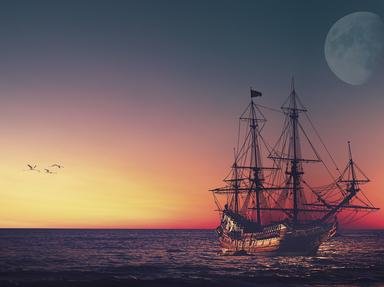Quiz Answer Key and Fun Facts
1. Who was the first person of European descent to blaze an overland trail from Mexico City to what is now the coast of California?
2. Who was the Spaniard who, along with a few others, became separated from the main party and had to fend for himself from Florida to Mexico City?
3. In the 1500's, this French explorer led three expeditions to Canada looking for the fabled "Northwest Passage". Although he didn't find the route he wanted, he did pave the way for the French to explore North America. Who is he?
4. In the late 1500's a Greek navigator who sailed for Spain, under a Spanish name, was looking for a passage from the Pacific to the Atlantic, rather than vice versa. He is believed to be the first European to have seen the Pacific Coast as far north as Vancouver Island. A body of water in that area is named after him. Who was he?
5. After hearing about the area, most likely from Bjarni Herjulfsson who had seen it, this man sailed to a hilly, forested land in the New World in about 1000. His name, please.
6. From 1799-1805, a Prussian naturalist, along with a botanist friend, explored much of Central and South America, collecting plant, animal and mineral specimens. Who was this curious fellow, after whom a water oddity is named?
7. This English explorer named Puget Sound for one of his crew members. He also named Mt. Rainier, Whidbey Island and Hood Canal, all in the present state of Washington. Who can he be?
8. During the 1500's an Italian navigator, sailing for Francis I of France, also looked for a Northwest Passage. He explored from Cape Fear, North Carolina, north to the coast of Maine and points further north, while his brother, who was a map maker and who had accompanied him on the voyage, mapped the areas. There is a bridge that is now named for him in one of the areas that was mapped. Who was he?
9. This man was the first American explorer in an American ship to circumnavigate the globe. He sighted and was the first to sail up a river in the Pacific Northwest that allowed the Americans to claim the Oregon Territory. A harbor in Washington state is named for him. What was his name?
10. This explorer was a multi-lingual Canadian who, with a priest, crossed the Mississippi River in 1673, leaving from what is now St. Ignace, Michigan. What was this brave man's name?
Source: Author
habitsowner
This quiz was reviewed by FunTrivia editor
bloomsby before going online.
Any errors found in FunTrivia content are routinely corrected through our feedback system.

